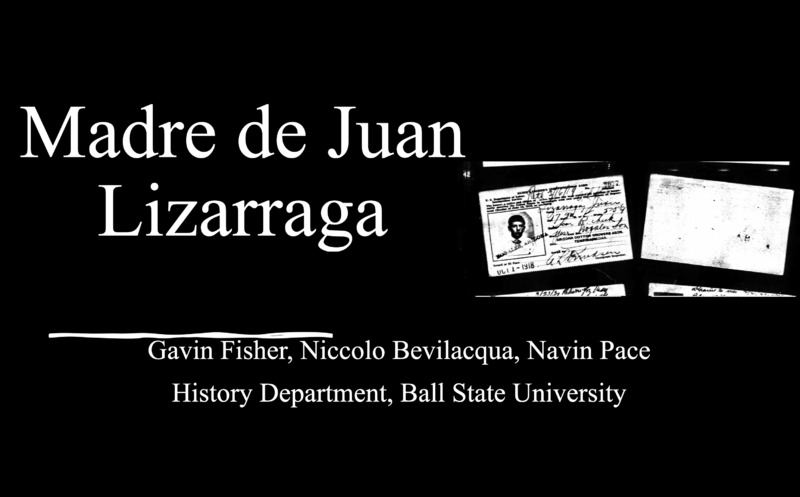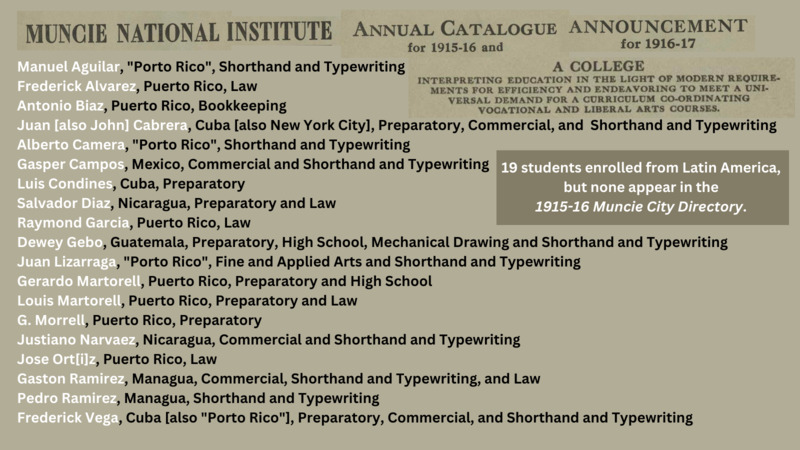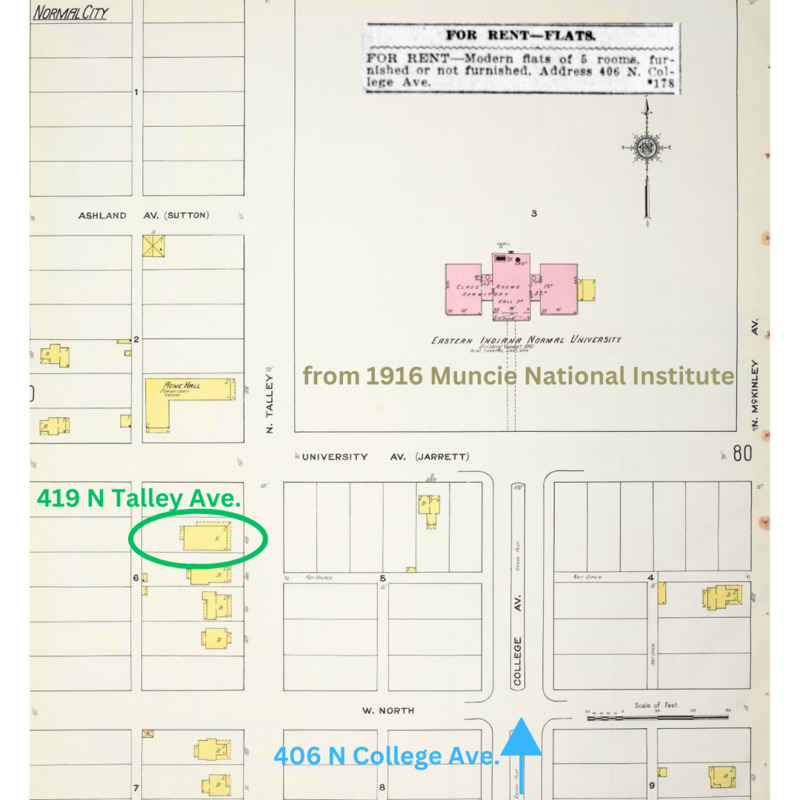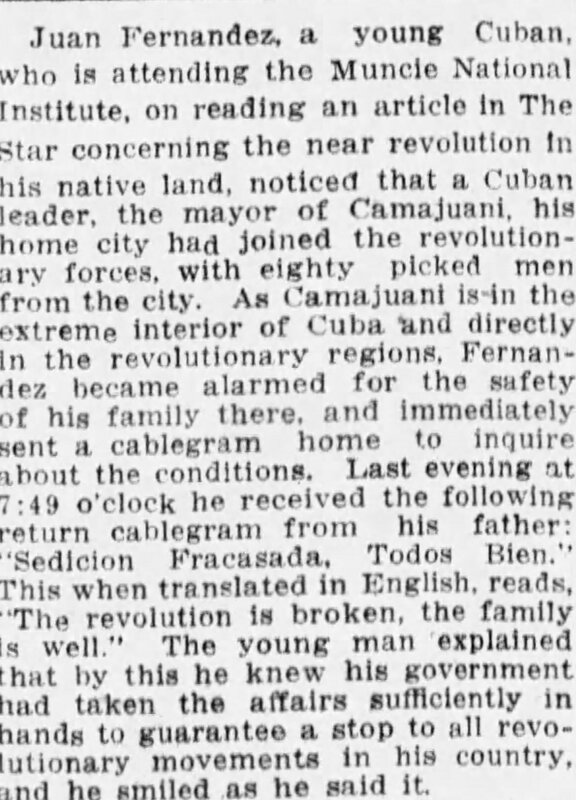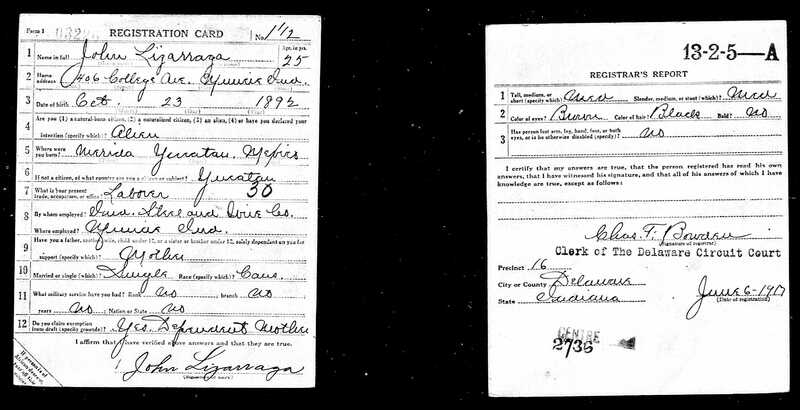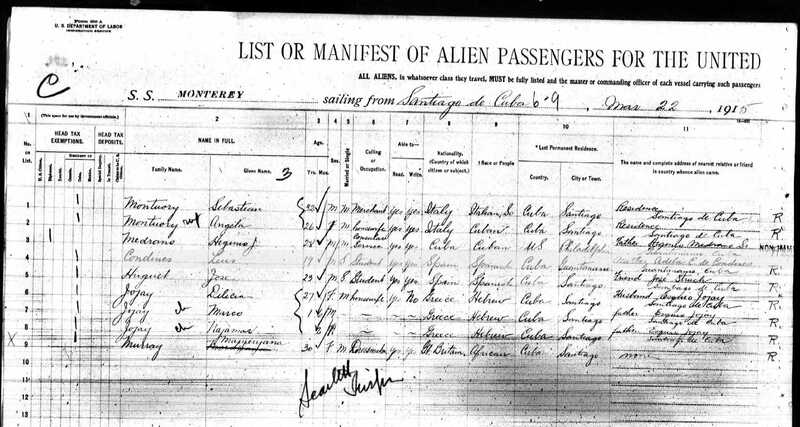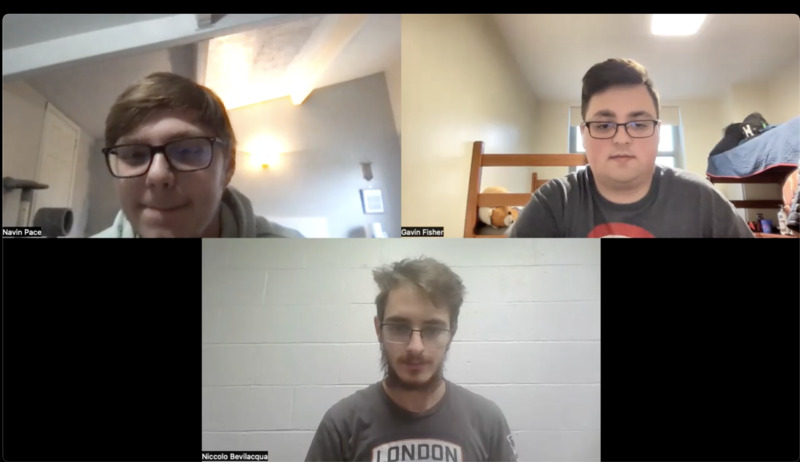Donatila, madre de Juan Lizarraga
It might seem strange to profile a woman who never lived in Muncie on the Notable Women of Muncie Project. Yet, the project's interest in work and migration, and how women made their way in the world, makes Donatila Azacoya Lizarraga, the mother of Juan Lizarraga, an interesting case. Although to our knowledge, she did not travel outside of Mexico, her household benefited via remittances from her son Juan's migration to Muncie in the 1910s for education and work. This remains a common narrative across the globe, and shows how Muncie hosted early Latino migrants.
This biography video was researched and created by Gavin Fisher, Niccolò Bevilacqua, and Navin Pace for HIST 200-01 (Spring 2023) at Ball State University.
In their work on Latino migration to Indiana, Nicole Martinez-LeGrand and Daniel Gonzales note that through the 1910s Mexican migrants increasing trickled into the Midwest. Mostly, these workers settled in the East Chicago-Indiana Harbor area and in Indianapolis. As the USA entered World War I and industrial production increased, in 1918 the American and Mexican governments signed a guest-labor program that would bring thousands of workers to northern Indiana. However, this initiative masks the fact that there were already small groups of Latinos studying and working across the state.
As the video tells us, the Muncie Normal Institute enrolled students from all over the country and beyond its borders. Below is a list of the nineteen Latino students enrolled at the Muncie National Institute in 1916. (This was the name of the Muncie Normal Institute after it was saved from receivership in late 1915, and before July 1917 when the Ball Brothers paid its bills.
An 1917 newspaper article (left) indicates that perhaps the city had noticed its growing Latino population. In response, the Muncie National Institute was offering a beginners' course in Spanish, taught by Gustavo Silva, who is also listed (without a place of origin) in the student catalogue.
Since none of the nineteen men listed (above) as students in 1916 appear in the 1915-1916 city directory and fewer than half in the 1917-18 directory, we might infer that they were short-term residents. Like many students today, these men probably lived in Muncie for the duration of their studies and then moved home or on to greater professional opportunities.
Several men appear in the 1917-18 city directory, in a boarding house filled with students. Manuel Aguilar, Jose Alonso, John Ferandz [sic], Frank Garcia, Mario Gassie, Byrone Fowler, and Charles Hobson all lived at 419 North Talley Avenue, across the street from the Muncie National Institute. John Lizarraga lived not far away at 406 North College Avenue. An advertisement in The Muncie Star Press (below) described furnished or unfurnished rooms for rent there. Paul Adomatis from Lithuania and William Cain, both students, also boarded at 406 North College, along with two couples. Like modern college residences, the boarding house seems to have had a lunchroom, as one of the husband, Alvia Favors, worked in it.
If it was not for World War I, we might never have known about Donatila, Juan Lizarraga's mother. It is hard to recover the personal lives of people who lived beyond the elite social circles of Edith Love. Letters and telegrams rarely make it into archives or newspapers. A rare example is the notice (left) that describes Juan Fernandez's communications with his family in Cuba during a period of instability. While the rarity of Latino students in Muncie made them more obvious, as students they did not have the wealth or connections of resident professionals.
Left: "Cuban Attending M.N.I. Gets Word from Father About Uprising There," The Star Press, February 20, 1917.
Because of this challenge, historians depend more on institutional records, like birth and death certificates, marriage registers, census records, and school catalogues. For historians, war can mean the destruction of documents, or an increase in communication records. In May 1917, the Selective Service Act compelled all American citizens and men resident in the United States to register for the US military.
In accordance with the law, in June 1917, Juan Lizarraga completed his registration form (above). From Juan's registration card we learn that he was twenty-five years old, he described himself as a laborer working for Indiana Steel and Wire, and his wages supported his mother. How much money Juan sent home and its impact on his family is beyond this document's reach. However, this connection between male migrants and mothers left behind is also seen in the case of Luis Condines. Below is a manifest for the Monterey ship, which left Santiago de Cuba and arrived in New York City in March 1915. Nineteen-year-old Luis was headed to Taylor University in Upland, IN, but ended up at Muncie National Institute with Juan. Much like his classmate, Luis' mother, Adela C. De Condines, was his registered relative. Perhaps mothers were expected to remain at home, seemingly passive, but like boarding-house keepers they anchored the household until someone returned.
Although her son Juan migrated between Mexico and the United States for education and employment, Donatila Azacoya Lizarraga remained in Merida. Her census report from 1930 shows a multi-generational household of eleven people. The widowed Donatila lived with her six children (plus one son-in-law) and three grandchildren. The report indicates that she owned the house as well as property in the countryside. One son was a professor, another an agent, and her son-in-law was a manager. Although Juan appears as the household head, he is only "employed". The absence of a profession makes his time spent at the Muncie National Institute all the more mysterious. What impact did his training in the arts, typing and shorthand have on his career? Did his mother depend on his wages or was that an excuse to avoid the draft? While these answers elude us, we do know that Donatila lived to be ninety. She stayed in Merida, even as Indiana's Latino community grew and Juan crossed the border again. His travels and her stability reflect a traditional pattern of migration. This would change only as the Latino community achieved greater size and security in the mid-twentieth century.
To learn more about how this project came together, watch this methodology video that was researched and created by Gavin Fisher, Niccolò Bevilacqua, and Navin Pace.
Click on Conclusion to reflect on what these six lives tell us about women in Muncie from 1870 to 1920 and onwards.

